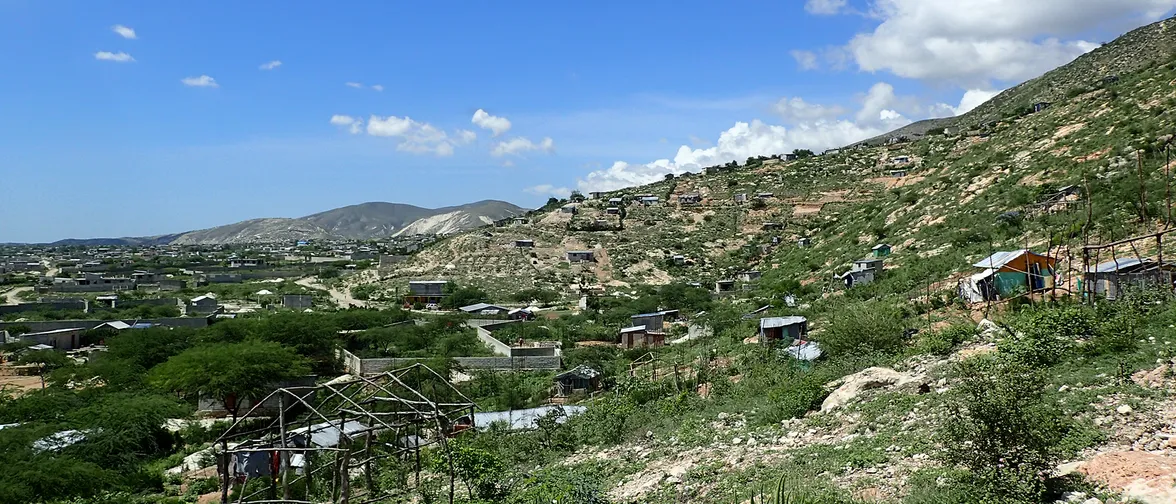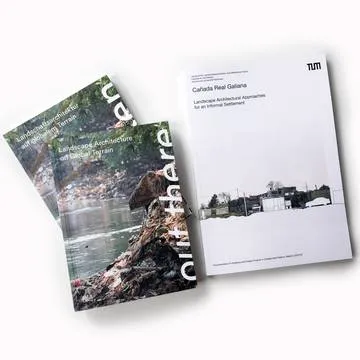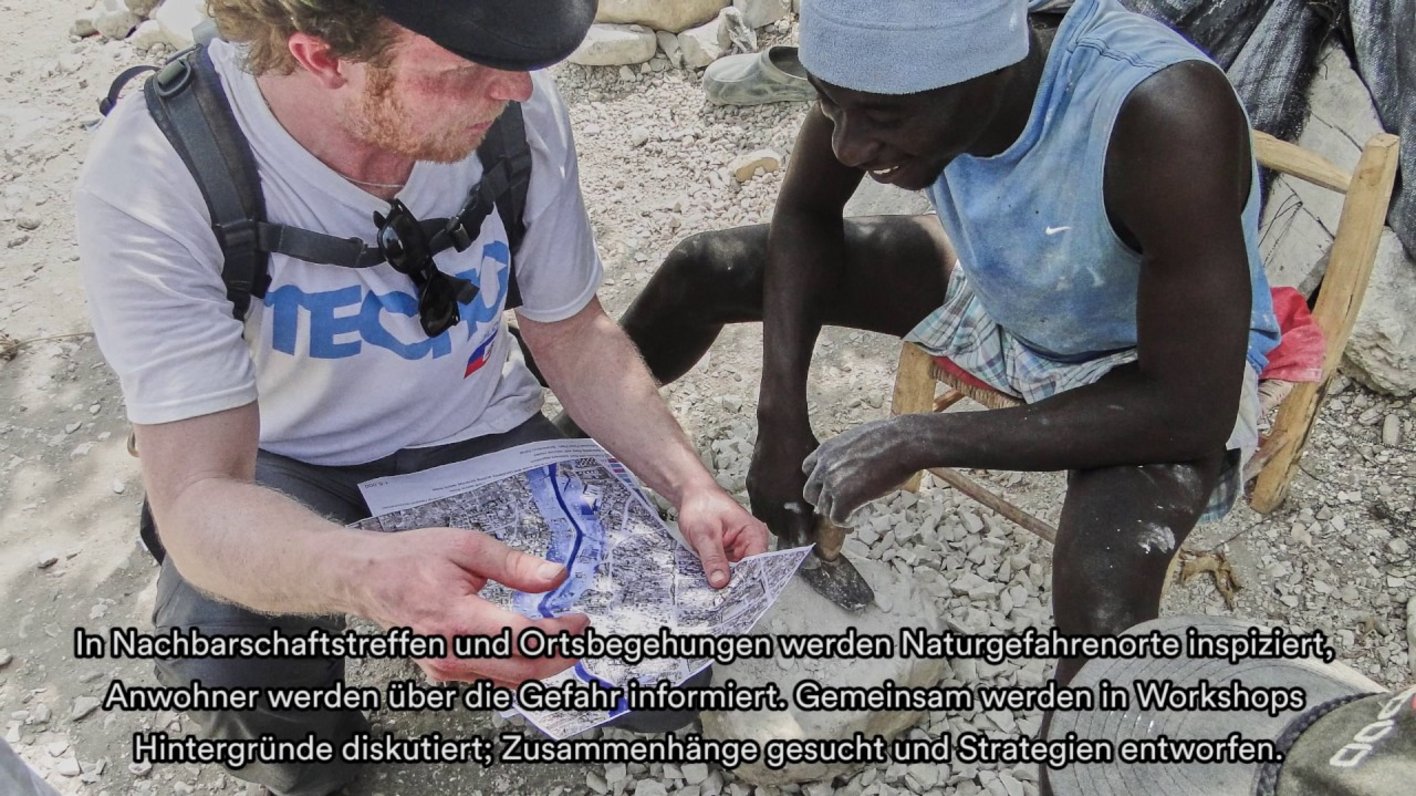
Urban Strategies for Onaville, Haiti
(TUM-USO)
Forschungsprojekt am Lehrstuhl für Landschaftsarchitektur und öffentlichen Raum
Laufzeit: 10/2012 bis heute
Beteiligte Mitarbeiter
Technische Universität München, IAS Hans Fischer Senior Fellow / Leibniz Universität Hannover: Prof. Christian Werthmann
Technische Universität München:
Lehrstuhl für Landschaftsarchitektur und öffentlichen Raum: Prof. Regine Keller, Johann-Christian Hannemann, Dr. Thomas Hauck
Lehrstuhl für Hydrologie und Flussgebietsmanagement: Prof. Dr. Markus Disse, Dr. Wolfgang Rieger, Patrick Keilholz
Lehrstuhl für Siedlungswasserwirtschaft: Prof. Dr. Harald Horn, Prof. Dr. Brigitte Helmreich, Gökce Iyicil/Fidan
Lehrstuhl für Wasserbau und Wasserwirtschaft: Prof. Dr. Peter Rutschmann, Dr. Franz Zunic
Lehrstuhl für Waldbau: Prof. Dr. Michael Weber
Lehrstuhl für Sustainable Urbanism: Prof. Mark Michaeli
PhD Kandidat*innen
Gökce Iyicil/Fidan
Studierende
Bjarne Bächle, María Alejandra Casanova, Raphaela Guin, Johann-Christian Hannemann, Valentin Heimhuber, Ines Hoffmann, Sean Kerwin, Wolfgang Krötzinger, Nelly Puren
Kooperationspartner:
TECHO Haiti, insbesondere Mariana Vázquez del Mercado, Olson Regis, Mariana Aramayo Donoso, Julio Martinez, Roxana Carballo, Lineda Paul, Silvia Rojas, Emmanuel Sougrain, Jean Baptiste Jean Baby, Jean Simon Riot, Vedanise Barbara Mondelus, Philippe Jocelyn, Frantzy Derisma, Kermie; Arbeitskreis Onaville-en-Haut; Arbeitskreis Onaville-en-Bas; Familien aus Onaville, insbesondere Salma Siméus und Marie Celestin; ONU Habitat Haiti; Oxfam; Helvetas Swiss Intercooperation; Unité de Construction de Logements et de Batiments Publics Haiti; Comité Interministériel d‘Aménagement du Territoire Haiti; Direction de la Protection Civile Haiti; Potentiel3.0/Communauté OpenStreetMap Haiti: Frédéric Moine; IOM: Jean Presler; CordAid: Laura Smits; USAID: Chris Ward; VivaRio: Valmir Fachini; World Dynamic Action Onaville; DroneAdventures; DLR
Reiseförderung
DAAD-PROMOS, TUM-Entwicklungszusammenarbeit
Forschungsziel
Since 2012, doctoral candidates and Master’s students of the Technische Universität München have been addressing the aftereffects of the earthquake in Haiti on a landscape and urban planning level. In Onaville—the easternmost neighborhood of Canaan suffering the most from natural hazards—the »Focus Group Onaville« starts its transdisciplinary work on small scale, landscape-based water management strategies and urban planning for improving living conditions.
Forschungsfrage
The underlying research question is if the involvement of academia – promoting research in open-ended processes through remote modeling and local field work, mutual learning, and community-based action – can generate less cost intensive, better adapted and more durable solutions when taking the community as main actor in a multi-stakeholder framework.
Kurzbeschreibung
At the foot of the Mornes du Pensez-y-Bien, a barren mountain massif scarred by natural forces and devastation, a new city is being created. Following the earthquake in January 2010, a UN refugee camp was set up here. As a result of the expropriation of a territory of around fifty km2, the place Canaan—which is subject to landslides, floods, storm, and drought—has grown to be the sixth largest city in the country. During extended research visits, the students on site cooperate with TECHO Haiti and residents in Onaville. What stood in the foreground—with the focus on supporting »development from below«—was finding out, how communicable descriptions of hydro-geographical and socio-spatial interrelations might flow into simple concepts and improvement strategies by means of an iterative process of thinking, acting, and reflecting.
Detailbeschreibung
The setting up of an Internally Displaced Persons camp about 15 km north-east of the earthquake-hit Haitian capital Port-au-Prince caused in 2010 the rise of Canaan, a vast unplanned urban settlement. As new families arrive each day, the pressure on people, land and environment increases. Public services such as water supply, sanitation and electricity are absent in most areas. By 2013 the area was already expected to host 60,000 to 300,000 people with more than 10,000 in the focus area Onaville. Situated on an alluvial cone in the transitional area between the eroded Chaine-de-Matthieux mountain range and the Cul-de-Sac floodplain, Onaville is exposed to multiple environmental hazards (flooding, landslide risk, lack of drinking water, etc.) and characteristic, unplanned urban development. The seasonal river Ravine Madaniel (also named Ravine Lan Couline) marks the border between Onaville and other parts of Canaan, posing large flood related risk to the surrounding settlements. Ongoing land ownership issues, unhampered uncontrolled urbanization, and the lack of a functioning political administration lead to harsh circumstances for the residents of the new city: no major interventions have been executed by the Haitian government or the “International Community”, so that the neighborhoods mostly rely on micro-scale work executed by NGOs and self-organized initiatives. A cooperation with the Port-au-Prince-based non-profit organization TECHO Haïti enabled Master’s and PhD-students of landscape architecture, urbanism, and environmental engineering at the TUM to exchange information, undertake field studies, become active as volunteers, and coordinate action with local initiatives and neighborhood committees in Onaville, Haiti. In return the student researchers have proven to be in a promising position to fill the knowledge deficit in rapidly growing urbanizations, and for bridging the information gap between community, national, and international actors. Research findings (e.g. a state of the art flood hazard analysis) have constantly been presented, improved, re-modeled, and discussed with key actors in the Haitian government, in local authorities, international aid and development agencies, and in meetings with community leaders in Onaville. Thereby the interdisciplinary group’s work has shown that through state of the art modeling combined with practice-oriented research and participatory action academic initiatives may contribute even with very limited financial means to improved knowledge, hazard awareness, community-building, and neighborhood action.
Ausstellung
Das Projekt wurde vom 27.04. bis 20.08.2017 ausgestellt in "draußen. Landschaftsarchitektur auf globalem Terrain"
Projektvideo
Lizenz: CC BY-SA 4.0
Publikationen

Hannemann, Johann-Christian. "Canaan, Haiti. Menschen, Häuser und Naturgewalten nach dem Erdbeben in Haiti" In Draußen. Landschaftsarchitektur auf globalem Terrain, herausgegeben von Andres Lepik, Undine Giseke, Regine Keller, Jörg Rekittke, Antje Stokman, und Christian Werthmann, 62-72. Berlin: Hatje Cantz Verlag, 2017.
Pünktlich zur Ausstellung erschien das Buch draußen / out there in deutscher und englischer Sprache im Verlag Hatje Cantz, 2017. Es ist für 32 € im Buchhandel erhältlich. Ein Blick ins Buch ist auf den Seiten des Verlags möglich: englisch / deutsch.
Heimhuber, Valentin; Hannemann, Johann-Christian; and Rieger, Wolfgang : "Flood Risk Management in Remote and Impoverished Areas—A Case Study of Onaville, Haiti", In: Water 2015, 7(7), 3832-3860; doi:10.3390/w7073832; Special Issue Sustainable Water Management and Decision Making under limited Data Availability
Hannemann, Johann-Christian, Christian Werthmann, and Thomas E. Hauck. "Designing for Uncertainty: The Case of Canaan, Haiti" In Revising Green Infrastructure. Concepts Between Nature and Design, edited by Daniel Czechowski, Thomas Hauck, and Georg Hausladen, 323-351. Boca Raton: CRC Press, 2014. http://dx.doi.org/10.1201/b17639-21
Hannemann, Johann-Christian "Cooperative Neighborhood Action in Onaville, Haiti—Designing a Process for Urban Development and Environmental Hazard Mitigation in a Rapidly Urbanizing Settlement". Master's Thesis, Technische Universität München, Munich, 2014
https://mediatum.ub.tum.de/node?id=1449706
Auszeichnungen
Ines Hoffmann wurde für ihre Master-Abschlssarbeit "Growing Interventions—Strategic Development and Hazard Mitigation Concept for the Informal Settlement Onaville, Haiti" mit dem Nachwuchspreis 2017 des BDLA ausgezeichnet
Präsentationen
Herrenhausen Conference "Dangerous Landscapes – Re-Thinking Environmental Risk in Low-Income Communities", Hanover, 27.11.2017
Johann-Christian Hannemann (LAO) und Gerardo Gazmuri (Architekt, Freiburg): "Student-NGO-Resident Connection. Assessment and Adaptation of Flood Risk in the Post-disaster Settlement of Onaville, Haiti"

